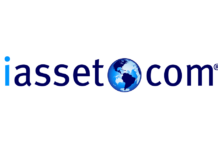At a gathering of international customers at its Pulse 2008 conference here, IBM introduced a comprehensive strategy and a broad set of new capabilities to help businesses achieve their green goals. Built around existing and new IBM software and services, as well as support from leading providers of technologies to managefacilities, including heating, cooling and electrical monitoring devices, the strategy is designed to help clients adopt software capabilities that helps organizations optimize and improve their energy efficiency.
In May 2007, IBM launched Project Big Green, committing $1 billion per year to deliver technologies that help customers increase the level of energy efficiency in their data centers. Since then, IBM has delivered a variety of hardware, software and services technologies to help customers go green and reap the benefits of increased efficiencies for their businesses while helping to reduce carbon emissions and benefit the environment. These include server-based technologies spanning blade, mainframe and Intel based systems, as well as services that help customers monitor their energy consumption and improve their infrastructure to deliver on green.
Introduced today, IBM “Software for a Greener World” is an expansion of Project Big Green and includes new and existing offerings that help organizations optimize their infrastructure, workloads and people for energy efficiency. Key new capabilities being announced are:
Tivoli software products that help organizations manage energy consumption in the data center and enable IT managers to manage power usage to reduce costs and control carbon emissions. These benefits are delivered through new products including Tivoli Monitoring and enhancements to IBM Maximo Asset Management, Maximi Spatial and IBM Active Energy Manager.
WebSphere Virtual Enterprise, which provides application infrastructure virtualization capabilities that lower operational and energy costs required to create, run, and manage enterprise applications and SOA environments.
Lotus Notes and Domino 8.5 for collaboration that offers green benefits for end users and IT departments by enabling significant reductions in travel and commuting.
WebSphere Portal 6.1 with improved performance monitoring infrastructure.
Lotus ActiveInsight 6.1 with integration with Business Intelligence (BI) solutions for real-time energy dashboards.
Rational Team Concert, which enables in-context collaboration for multi-site software development and collaboration, reducing CO2 emissions.
Information Management capabilities available with IBM Compliance Warehouse for Legal Control that enables organizations to achieve, sustain, and prove compliance with increasing environmental regulatory requirements while reducing cost, complexity, and risk.
In addition, IBM is producing self-assessment tools to enable organizations to quickly identify green starting points and supporting with services and guides to enable them to jump start their green projects. The products are part of a larger portfolio of IBM offerings with capabilities that help organizations reduce their energy consumption.
“The explosion of computers and networks have helped make the Internet and computing what it is today, but mounting energy and environmental costs associated with the technology systems that comprise this infrastructure are taking their toll,” said Al Zollar, general manager, Tivoli Software, IBM. “While most people think of energy conservation from a hardware perspective, increasingly it is actually software that is providing more options to go green across the entire organization
The need for energy efficientsoftware comes from multiple factors. Energy costs are rising dramatically, with the cost of a barrel of oil rising to new heights;government regulations are forcing companies to reduce carbon emissions and water usage; customers are evaluating the green credentials of their suppliers; and the world is getting smaller, with teams collaborating across geographies. Data centers are running into power and capacity cooling limits, hindering growth of IT services.
IBM’s strategy focuses on three key areas of software: the use of online tools such as collaboration to reduce the necessity of travel; workloads and the efficiencies gained by improved business processes and automation to increase power efficiency and infrastructure maintenance and redesign to consolidate and virtualized IT, monitor energy usage and shift resources to maximize efficiency based on demand. These areas are supported by a variety of IBM products — including Rational and Lotus offerings such as instant messaging and Web conferencing, the redesign of business processes delivered by SOA WebSphere, FileNet and Tivoli, and infrastructure redesign/efficiency benefits achieved through Information Management, Tivoli and WebSphere offerings. These products support IBM’s unique approach to software development and deployment that not only enable energy efficiency but are more energy efficient themselves by design. IBM has the industry’s largest breadth of offerings and considers its software the “greenest” in the industry.
People
The internationalization of business, along with rising fuel costs and the large amount of CO2 emissions generated by airplanes and automobiles, have raised the importance of electronic collaboration in connecting colleagues across geographies while reducing the need for travel and paper usage, among other resources. The tools that support collaboration also help to reduce real estate costs as a growing number of employees are working from home. Among the ways in which technology supports online collaboration are through the use of instant messaging, Web conferencing, online learning and multi-site software development collaboration.
Workloads
Transforming business processes through redesign and increased automation delivers a large green benefit by reducing resource needs, paper and controlling the need for humans to do tasks that can be automated. In the process, power efficiency and energy consumption are maximized. This is especially applicable to paper intensive industries such as banks, law firms and insurance companies. IBM’s SOA, WebSphere, Information Management and Tivoli offerings address this area.
Balancing and maximizing the energy efficiency of an application based on business needs and IT constraints delivers a significant benefit to the environment by controlling costs. The key here is to increase server utilization by migrating, integrating and extending applications on greener and better utilized platforms. IBM offerings that play a key role in accomplishing this are from Rational, WebSphere and Tivoli. Applications often reside on dedicated underutilized infrastructure are often locked into inefficient platforms, so these offerings can help customers improve energy efficiency of applications while meeting business needs and goals. Using application management software, customers can gain a deep understanding of application behavior to identify opportunities for green improvements.
Infrastructure
A clear view of a company’s infrastructure is essential in understanding the steps that can be taken to increase power efficiency and reduce costs. A key way of accomplishing this is by automating IT assets and facilities, tracking usage and trends on a continuing basis, and optimizing how information is stored, managed, and leveraged across the enterprise. The key steps that businesses can take to get a better handle on their infrastructure include consolidating and virtualizing their data in addition to compressing data and deploying tiered storage to match
the value of information over its lifespan. The overall goal is to optimize IT and facility energy use and maintain a business’ infrastructure for peak efficiency. Among the key IBM offerings that help accomplish this are those from the Lotus, WebSphere, Information Management and Tivoli portfolios.
Maintaining infrastructure beyond IT resources in proper operating condition is critical to increasing energy efficiency across the organization. Tivoli offerings track and help proactively maintain assets of all kinds for reliable and efficient operations.
Complying with external environmental regulations and internal goals is a critical activity for organizations. To streamline the compliance activities, customers can use software solutions that collect, analyze, track, display, and report on data and energy usage for compliance and environmental regulations. Products such as Cognos 8 BI and IBM Compliance Warehouse for Legal Control are critical to compliance activities. In addition, by using Tivoli Usage and Accounting Manager, customers can track and allocate energy costs to delivered services. Offerings from Information Management, Tivoli and Lotus are critical to provide secure, traceable, categorized and indexed information for compliance purposes.
In addition, customers who have already made the move to invest in service oriented architecture (SOA) from IBM are at a clear advantage for implementing energy saving solutions. The SOA reference architecture serves as a robust framework to support both the business and IT imperative of effective carbon management enterprise wide. Through the continuous alignment of business and IT that SOA provides, companies gain a higher degree of agility and freedom in that IT well poised to respond to the business strategy.
“IBM is making a strategic move to apply its breadth of data center management capabilities to partner solutions that will help customers monitor energy consumption across IT and facility resources such air conditioning units and lighting,” said Rich Ptak , Co-founder and Analyst at Ptak , Noel & Associates LLC. “By creating one cohesive view of energy consumption across the enterprise, customers will be able to use IBM Tivoli Monitoring for Green Energy to manage power usage and predict potential energy-related events . This allows staff to make the IT decisions and energy allocations necessary to maintain service levels. This is a giant step in energy management as it brings data center and facility management together to help increase energy efficient operation across the enterprise.”












